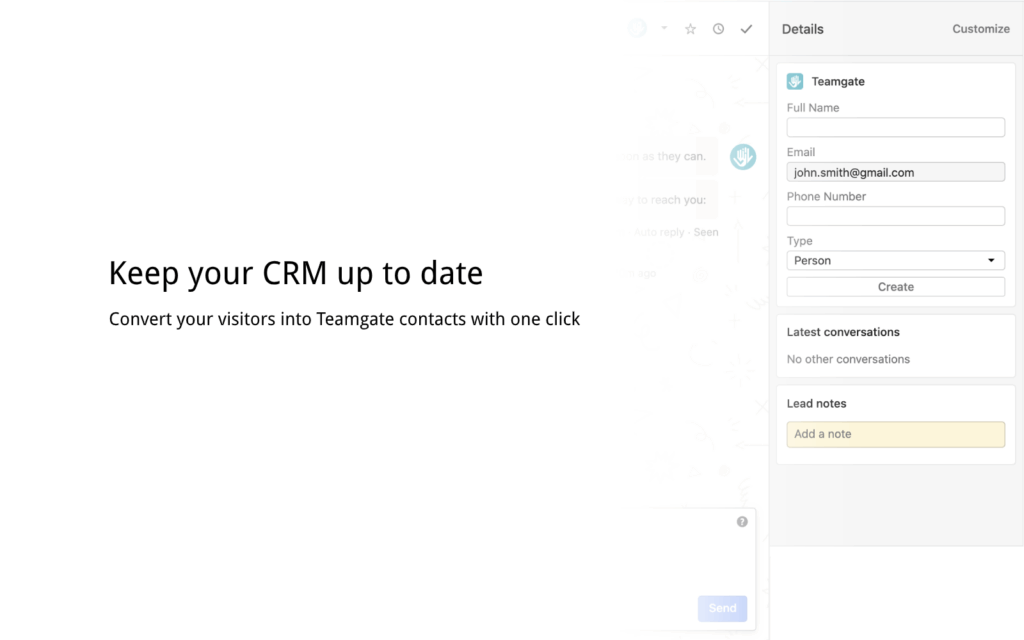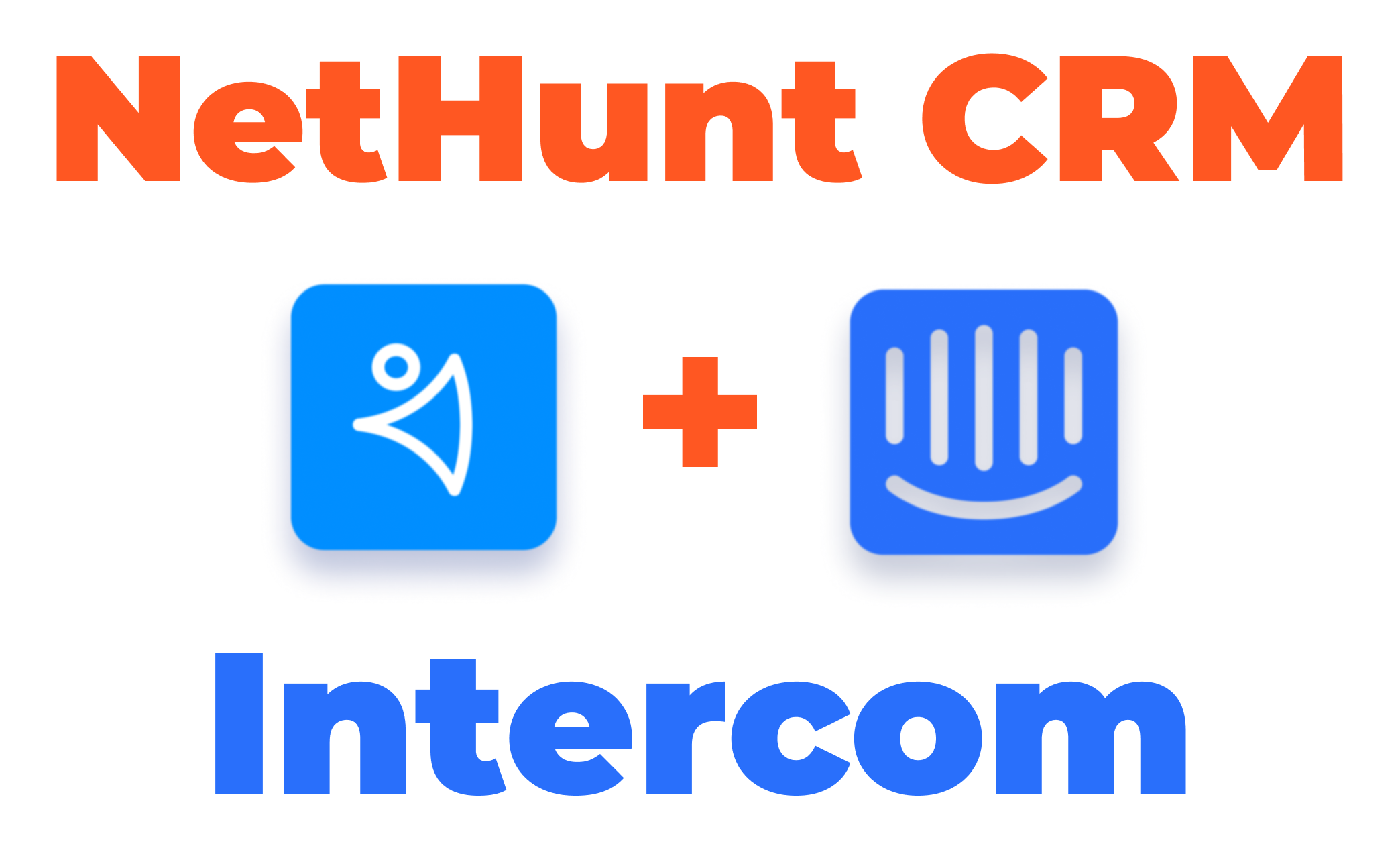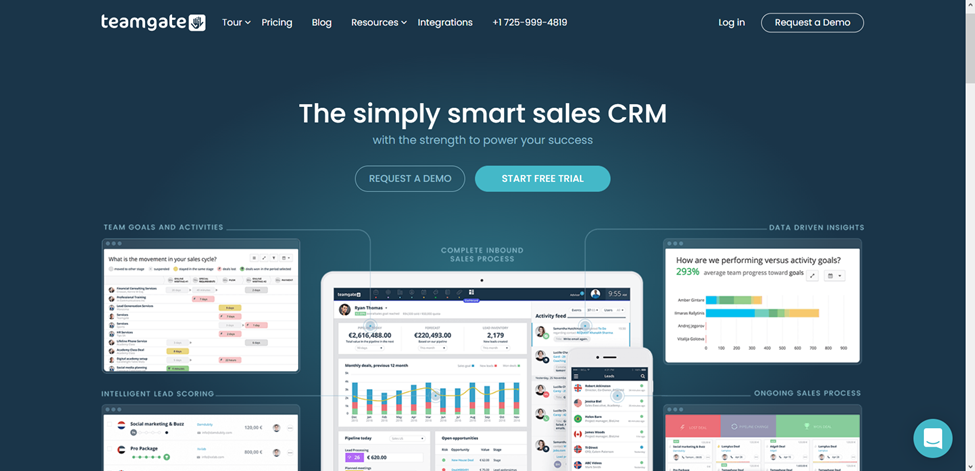
Supercharge Your Customer Relationships: A Deep Dive into CRM Integration with Intercom
In today’s fast-paced business environment, providing exceptional customer experiences is no longer a luxury; it’s a necessity. Customers expect personalized interactions, seamless support, and quick resolutions. To meet these demands, businesses are increasingly turning to powerful tools that streamline their operations and enhance customer engagement. Two such tools are Customer Relationship Management (CRM) systems and Intercom, a leading customer communication platform. When these two powerhouses are integrated, the result is a synergistic force that can revolutionize how you interact with your customers.
This comprehensive guide delves into the world of CRM integration with Intercom, exploring its benefits, practical implementation, and real-world examples. Whether you’re a seasoned professional or just starting to explore these technologies, this article will equip you with the knowledge and insights you need to elevate your customer relationships and drive business growth.
Understanding the Core Players: CRM and Intercom
What is CRM?
CRM, or Customer Relationship Management, is a system designed to manage all your company’s interactions with current and potential customers. At its heart, a CRM system acts as a central repository for customer data, including contact information, purchase history, support interactions, and more. This centralized view allows businesses to:
- Gain a 360-degree view of each customer: Understand their needs, preferences, and past interactions.
- Improve customer service: Provide faster, more personalized support.
- Enhance sales effectiveness: Identify and prioritize leads, track sales progress, and close deals more efficiently.
- Boost marketing ROI: Target marketing campaigns more effectively and personalize messaging.
- Analyze customer data: Identify trends, predict customer behavior, and make data-driven decisions.
Popular CRM systems include Salesforce, HubSpot CRM, Zoho CRM, Microsoft Dynamics 365, and Pipedrive, among others. Each system offers a range of features, and the best choice depends on your specific business needs and budget.
What is Intercom?
Intercom is a customer communication platform that enables businesses to engage with customers across various channels, including:
- Live chat: Provide real-time support and answer customer questions on your website or within your app.
- Messaging: Send targeted messages to specific customer segments.
- Help desk: Offer self-service support through a knowledge base and help center.
- Product tours and onboarding: Guide new users through your product and help them get started.
- Email: Send automated and personalized email campaigns.
Intercom is known for its user-friendly interface, powerful automation capabilities, and focus on providing proactive customer support. It’s a popular choice for businesses of all sizes, from startups to large enterprises.
The Power of Integration: Why Integrate CRM with Intercom?
Integrating your CRM system with Intercom unlocks a wealth of benefits that can transform your customer interactions and drive business success. Here are some key advantages:
- Enhanced Customer Context: Intercom gains access to your CRM data, providing your support and sales teams with a complete view of each customer’s history, including past purchases, support tickets, and interactions. This context allows for more personalized and effective communication. Imagine a customer reaches out via chat. Instead of asking them to repeat their information, your team can instantly see their purchase history, previous support interactions, and any other relevant details from your CRM. This leads to faster resolutions and a more satisfying customer experience.
- Improved Efficiency: Automation becomes the name of the game. By syncing data between your CRM and Intercom, you can automate tasks like creating new customer profiles, updating contact information, and triggering targeted messages based on customer behavior or CRM data. This frees up your team to focus on more complex issues and strategic initiatives. For instance, you could automatically trigger a welcome message in Intercom to new customers once their profile is created in your CRM.
- Personalized Customer Experiences: With access to customer data from your CRM, you can personalize your communication with customers in Intercom. This includes tailoring your messaging, offering relevant product recommendations, and providing proactive support based on their individual needs and preferences. This level of personalization fosters stronger customer relationships and increases customer loyalty. Think about sending targeted product updates to customers based on the products they’ve purchased or offering exclusive discounts to loyal customers.
- Streamlined Workflows: Integrate your CRM and Intercom to create seamless workflows between your sales, marketing, and support teams. For example, when a lead is identified in Intercom, you can automatically create a new contact in your CRM and assign it to a sales representative. This ensures that no lead falls through the cracks and that your team is always working with the most up-to-date information.
- Data-Driven Insights: Integration allows you to track key metrics across both platforms, providing valuable insights into your customer interactions and business performance. You can analyze data from your CRM and Intercom to identify trends, measure the effectiveness of your campaigns, and optimize your customer engagement strategies. This data-driven approach enables you to make informed decisions and continuously improve your customer relationships.
How to Integrate Your CRM with Intercom: A Step-by-Step Guide
The process of integrating your CRM with Intercom can vary depending on the specific CRM system you use. However, the general steps are as follows:
1. Choose Your Integration Method
There are several ways to integrate your CRM with Intercom:
- Native Integrations: Some CRM systems have native integrations with Intercom, which means they offer pre-built connections that are easy to set up and configure. Check if your CRM system has a native Intercom integration. This is often the easiest and most straightforward option.
- Third-Party Integrations: Third-party integration platforms like Zapier, Make (formerly Integromat), and Tray.io can connect your CRM with Intercom. These platforms offer a wide range of pre-built integrations and allow you to customize your workflows.
- Custom Integrations: If you have specific requirements or your CRM system doesn’t have a native or third-party integration, you can build a custom integration using APIs (Application Programming Interfaces). This requires technical expertise and development resources.
2. Prepare Your CRM and Intercom Accounts
Before you start the integration process, make sure you have the following:
- Active accounts: You need active accounts for both your CRM system and Intercom.
- Admin access: You’ll need administrator or equivalent access to both platforms to configure the integration.
- API keys: You’ll need to generate API keys in both your CRM and Intercom accounts. These keys allow the two systems to communicate with each other.
- Data mapping: Plan how you want to map the data fields between your CRM and Intercom. For example, you might want to map the “email” field in your CRM to the “email” field in Intercom.
3. Set Up the Integration
The specific steps for setting up the integration will vary depending on the method you choose. Here’s a general overview:
- Native Integration: Follow the instructions provided by your CRM system. Typically, this involves logging into your Intercom account from your CRM, authorizing the connection, and configuring the data mapping.
- Third-Party Integration: Sign up for an account with the integration platform (e.g., Zapier). Connect your CRM and Intercom accounts to the platform. Then, create “zaps” (Zapier), “scenarios” (Make), or “workflows” (Tray.io) to automate data transfer between the two platforms.
- Custom Integration: Work with a developer to build a custom integration using the APIs of your CRM and Intercom. This involves writing code to handle data synchronization and workflow automation.
4. Test the Integration
Once you’ve set up the integration, test it thoroughly to ensure that data is being transferred correctly and that workflows are functioning as expected. Create test records in your CRM and Intercom and verify that the data is synchronized. Send test messages and check that they are being delivered correctly.
5. Monitor and Optimize
After the integration is live, monitor its performance regularly. Check for any errors or issues and make adjustments as needed. Optimize your workflows to ensure that they are efficient and effective. Continuously analyze the data to identify areas for improvement and refine your customer engagement strategies.
Practical Examples of CRM Integration with Intercom in Action
Let’s explore some real-world examples of how businesses are leveraging CRM integration with Intercom to enhance their customer relationships:
Example 1: Sales Team Efficiency
A SaaS company uses Salesforce as its CRM and Intercom for live chat. When a potential customer visits their website and starts a chat, the sales team can instantly see the lead’s information from Salesforce, including their company name, industry, and previous interactions with the company. If the lead is a qualified prospect, the sales rep can create a new opportunity in Salesforce directly from Intercom, pre-populating the relevant information. This streamlined workflow saves the sales team valuable time and ensures that no leads are missed.
Example 2: Personalized Customer Support
An e-commerce business uses HubSpot CRM and Intercom for customer support. When a customer reaches out via chat with a question about a recent order, the support agent can instantly see the customer’s order history, including the items purchased, shipping status, and any previous support tickets. The agent can provide personalized support and resolve the issue quickly, leading to a more satisfying customer experience. They can also proactively offer assistance based on the customer’s purchase history, such as recommending related products or offering exclusive discounts.
Example 3: Targeted Marketing Campaigns
A marketing agency uses Zoho CRM and Intercom to run targeted marketing campaigns. They segment their customer base in Zoho based on various criteria, such as industry, company size, and purchase history. They then use Intercom to send personalized messages to each segment, promoting relevant products or services. For example, they might send a message to a segment of customers who have expressed interest in a specific service, offering them a special promotion or inviting them to a webinar. This targeted approach increases the effectiveness of their marketing campaigns and drives conversions.
Example 4: Proactive Customer Onboarding
A software company uses Pipedrive CRM and Intercom to onboard new customers. When a new customer signs up for their software, a new contact is automatically created in Pipedrive. The integration triggers a series of automated messages in Intercom, guiding the customer through the onboarding process. This includes welcome messages, product tours, and tips for getting started. This proactive approach helps customers get up and running quickly, reducing churn and increasing customer satisfaction.
Best Practices for CRM Integration with Intercom
To maximize the benefits of your CRM integration with Intercom, follow these best practices:
- Plan Your Integration Strategy: Before you start the integration process, take the time to plan your strategy. Define your goals, identify the data you want to synchronize, and map out your workflows.
- Choose the Right Integration Method: Select the integration method that best suits your needs and technical expertise. Native integrations are often the easiest to set up, while third-party integrations offer more flexibility.
- Map Data Fields Carefully: Ensure that you map data fields correctly between your CRM and Intercom. This will prevent data errors and ensure that your teams have access to the information they need.
- Test Thoroughly: Test the integration thoroughly to ensure that data is being transferred correctly and that workflows are functioning as expected.
- Train Your Team: Train your team on how to use the integrated systems and workflows. This will ensure that they can leverage the full potential of the integration.
- Monitor and Optimize Regularly: Monitor the performance of the integration regularly and make adjustments as needed. Optimize your workflows to ensure that they are efficient and effective.
- Prioritize Data Security and Privacy: Implement appropriate security measures to protect your customer data. Comply with all relevant data privacy regulations, such as GDPR and CCPA.
- Document Everything: Keep detailed documentation of your integration setup, workflows, and any customizations. This will help you troubleshoot issues and maintain the integration over time.
Troubleshooting Common Issues
Even with careful planning and execution, you may encounter some common issues during the CRM integration with Intercom. Here’s how to troubleshoot them:
- Data Synchronization Errors: If data is not synchronizing correctly, check your data mapping settings and ensure that the fields are correctly mapped. Verify that your API keys are valid and that you have the necessary permissions.
- Workflow Automation Problems: If your workflows are not functioning as expected, review the triggers and actions in your integration platform. Ensure that the conditions are correctly configured and that the workflows are enabled.
- Slow Performance: If the integration is causing performance issues, optimize your workflows and reduce the amount of data being synchronized. Consider using a more powerful integration platform or upgrading your CRM or Intercom plan.
- API Rate Limits: Be aware of the API rate limits of your CRM and Intercom. If you exceed these limits, your integration may temporarily stop working. Monitor your API usage and adjust your workflows accordingly.
- Data Format Incompatibilities: Ensure that the data formats in your CRM and Intercom are compatible. For example, date formats and currency formats may need to be converted.
If you encounter persistent issues, consult the documentation for your CRM and Intercom or contact their respective support teams for assistance.
The Future of CRM and Intercom Integration
The integration between CRM systems and customer communication platforms like Intercom is constantly evolving. As technology advances, we can expect to see even more sophisticated integrations and features. Here are some trends to watch for:
- AI-Powered Automation: Artificial intelligence (AI) is playing an increasingly important role in CRM and customer communication. We can expect to see AI-powered automation features that can personalize customer interactions, automate support tasks, and provide data-driven insights.
- Enhanced Personalization: Businesses will continue to focus on providing highly personalized customer experiences. CRM and Intercom integrations will become even more sophisticated, allowing for more granular segmentation and targeted messaging.
- Omnichannel Communication: Customers expect to be able to interact with businesses across a variety of channels, including live chat, messaging apps, email, and social media. CRM and Intercom integrations will continue to evolve to support omnichannel communication strategies.
- Deeper Analytics and Reporting: Businesses will need to track key metrics and analyze data to understand the effectiveness of their customer engagement strategies. CRM and Intercom integrations will provide more advanced analytics and reporting capabilities.
- Increased Focus on Data Privacy and Security: As data privacy regulations become more stringent, businesses will need to prioritize data security and compliance. CRM and Intercom integrations will need to support these requirements.
By staying informed about these trends, you can position your business for success and leverage the power of CRM integration with Intercom to create exceptional customer experiences.
Conclusion: Embrace the Power of Integration
CRM integration with Intercom is a powerful combination that can transform your customer relationships. By seamlessly connecting these two essential tools, you can unlock a wealth of benefits, including enhanced customer context, improved efficiency, personalized customer experiences, streamlined workflows, and data-driven insights. Implementing this integration requires careful planning, but the rewards – increased customer satisfaction, improved sales performance, and enhanced business growth – are well worth the effort.
By following the step-by-step guide and best practices outlined in this article, you can successfully integrate your CRM with Intercom and start building stronger, more meaningful relationships with your customers. Embrace the power of integration and take your customer engagement to the next level!


